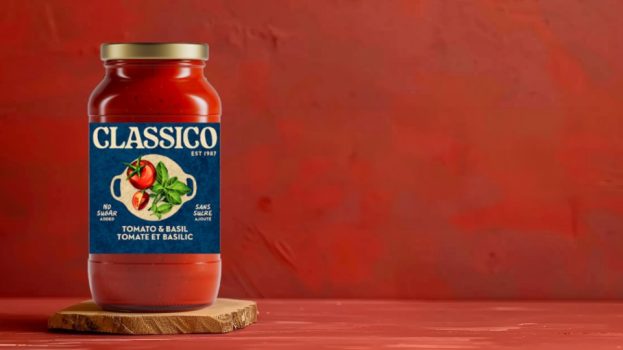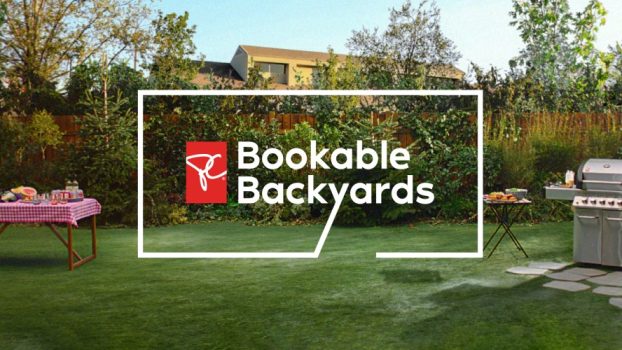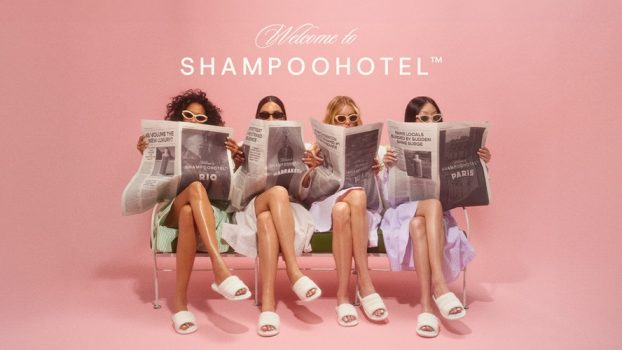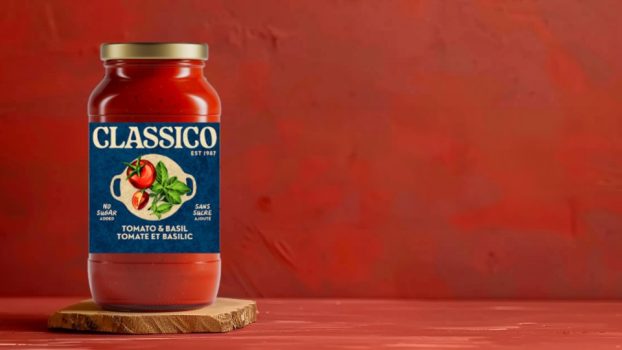The Bangles once sang about a loathing for ‘manic’ Mondays, tapping into sentiments that likely still ring true for many of us. But that didn’t stop PricewaterhouseCoopers from naming its consulting practice after the dreaded day of the week.
In January, PwC decided to turn the division into a separate entity, settling on the Monday moniker after polling its employees for suggestions and bringing in an outside global brand consultant, London, U.K.-based Wolff Olins.
Reaction was mixed, to say the least. While Monday was about to embark on a US$110-million rebranding effort, Web sites, such as www.monday.cc, began sprouting up online with the express purpose of mocking the name choice. Then, at the end of July, IBM announced it was purchasing Monday for $3 billion, but it wouldn’t retain the name.
That’s a lot of money down the drain, as launching a new moniker isn’t exactly cheap. Just ask Chicago, Ill.-based Andersen Consulting, for instance, which reportedly spent US$150 million to resurface as Accenture – or New York-HQ’d Bell Atlantic, which dished out $140 million for debuting its new name Verizon.
Despite the short lifespan of its tag, the Monday fiasco is indicative of two trends, according to a recent Interbrand Tudhope survey on naming: first, that more marketers are turning to outside sources to come up with names; and second, that there is a return to ‘real’ words, as opposed to the ‘coined’ variety, like Verizon and Expedia, that was all the rage during the dot-com boom.
‘Those [names] are now associated with technology companies, and people don’t want to sound like them,’ explains Julie Cottineau, managing director of naming at New York-based consultancy Interbrand Tudhope. ‘We think it has to do with a backlash to the dot-com bust, but it also has to do with our post-Sept. 11 ‘back to reality’ [frame of mind]. We’re all looking for simpler times.’
In July, the firm conducted its first annual ‘Name Game’ survey, which ran online and elicited responses from 218 global marketers, 75% of whom have been directly involved in a naming project. The majority of respondents (57%) said they see a trend toward more ‘real’ names, whether singular or compound, because they believe consumers want ‘honesty and integrity in branding.’ Cottineau points out that the recent slew of corporate accounting scandals has also helped shape this penchant for straightforward honesty.
Meanwhile, 60% replied they used outside consultants for naming, citing that they improve the quality of possible monikers and overcome trademark barriers. Certainly, the process of naming has become more complex in recent years, as all six million English words are now trademarked, although many were registered during the dot-com flurry and aren’t actually in use, according to Cottineau.
Even in places like cyberspace and the auto industry, where made-up names have been common in the past, real words are beginning to emerge, she adds. Some examples include the U.S. travel sites Orbitz.com and jetBlue, and in the car sector, Toyota’s sporty, new four-door, the Matrix, which launched in Canada earlier this year.
Contrary to popular belief, Laura Lang, Toyota’s brand loyalty and strategy manager in California, says the auto manufacturer never planned on riding the coattails of another, established name, in this case, the sci-fi blockbuster The Matrix.
‘The name was chosen after the movie, but it had nothing to do with it,’ she says, adding that Toyota wasn’t worried about a consumer backlash if the public perceived it as a rip-off. ‘The movie was never a major concern, in fact, because it was so well received, if anything, it strengthens the product’s imagery.’
The advertising for the Matrix from Toronto-based Saatchi & Saatchi – whose TV spot was also picked up by Toyota south of the border – carries the tagline ‘Shift Reality’ and is geared at ‘hip’ 25-30s. According to the agency, the name Matrix was favoured in North American research, and is ‘very much a reflection of the futuristic, edgy design of the vehicle.’
Conceived in Japan at Toyota’s world headquarters (like most of its fleet), the Matrix was named nearly two years before any visual plans for the car were created. ‘There were no photos of the car, just a description,’ Lang recalls.
Cottineau says it is vital to label a product early so that the rest of the branding process can stem from it. ‘You don’t wait until the baby is six months old before you give it a name,’ she says, adding that some firms make the mistake of labeling brands at the eleventh hour. ‘What I think is interesting about the Matrix is it’s breaking with the convention of coined car names, like Acura, and it has the technology association. It’s probably an up side.’
Not all naming experts would agree, however. Naseem Javed, president of Toronto’s ABC Namebank, which is responsible for names like Telus and Celestica, believes that Matrix breaks a cardinal rule of naming – never play copycat. He adds that companies have gotten into the habit of choosing creativity over strategy when devising a moniker.
Monday, for example, ‘is the worst name of the new millennium,’ he says. ‘The acid test is simple: a name should be short, unique, memorable and it must relate to the brand. Does Monday relate? Of course not.’
Ironically, Javed’s above criteria is exactly what PwC Consulting’s chief marketing officer, Bennett Machtiger, envisioned for Monday. He wanted it to be short, easy to pronounce in various languages and something people wouldn’t easily forget. Plus, for him, it was a reflection of a new, fresh way of doing business.
From Javed’s point of view, names like Monday exist because today’s approach to naming is flawed. ‘Naming is not a creative exercise,’ he explains. All too often, he says, when an advertising agency is involved in the naming procedure, they take the easy way of conceptualizing thousands of names, narrowing them down to a short list, then presenting that list to the client. ‘That’s suicidal,’ he says. ‘You can’t pull a name out of a hat.’
His solution is to have a ‘master architect,’ who establishes a professional system that’s based on the client’s objective for the name, not what he calls today’s ‘voodoo branding,’ approach. ‘A bad name can kill a successful product,’ he says.
There are six sure-fire rules to follow, Javed says. They include: make sure the name is not similar to thousands of others; it can’t be too old or out-of-touch with today’s culture (for example, the dot-com craze of adding an ‘e’ or an ‘i’ to a name is long over); never get too creative with the spelling; if you’ve spent more cash on explaining the name than conceptualizing it, you’re in trouble; the name can’t be embarrassing or offensive in foreign countries; and finally, if it’s too long or too complicated, abandon it.
Usually, getting to the point of launching a new name takes about three months. The process begins with name development, which includes brainstorming with internal brand experts and sometimes consultants. Once a few are chosen, the names go through consensus-building, with all upper management, including the CEO, reviewing the names. When the name has been approved, the longest part of the exercise, a legal and linguistics check, takes over. Finally, the name is ready to go.
Cottineau, who says it can cost up to US$200,000 for naming, also doesn’t believe the process is strictly about creativity. ‘It’s important that it’s treated as seriously as other elements of the marketing mix,’ she says, adding that advertising agencies aren’t always the best organizations for the job, because they can get too entrenched in a certain category.
‘We would approach a project with naming constructs and conventions used in different markets. For instance, we might approach a high-performance lipstick like a motor oil.’
Interbrand also tests options by asking consumers about inherent positives and negatives of each name. But Cottineau cautions there is a danger in asking them directly which moniker they prefer. ‘They will always gravitate to descriptive names, like Coffee and Bagels, but when you ask them about the brands with which they feel the strongest affiliation, they’ll tell you Starbucks, Nike and Rolex.’
Nonetheless, for some companies like Toyota, ‘finding a good name is not a hard science,’ according to Lang, who believes the most important criteria are to ensure the name conveys the image of the vehicle and resonates with the target group. Deciding if a real word, a made-up moniker or an alphanumeric designation fits suitably with the car can be the hardest part. Lang explains that generally, alphanumeric names are given to luxury cars under the Lexus brand because that brand itself is what sells the car, not the scramble of words and letters, like the IS 300, under the logo.
Sony Electronics takes a similar approach. In October 2001, it launched its first venture into the PDA market with the personal entertainment organizer, the CLIÉ (an acronym, pronounced Clee-ay, which stands for Communication Linking Information and Entertainment). The newest model, the PEG-NR70V doesn’t exactly tell consumers much about the product.
Yet, for John McCarter, corporate communications director at Toronto-based Sony of Canada, this alphanumeric soup of a name is less about the unit and more about the Sony brand. Even though a campaign explaining what the CLIÉ stood for accompanied the launch, the average layman (maybe even a good number of technophiles) probably can’t remember what the acronym stands for, let alone the sub-designation. So is Sony concerned with confusing the consumer?
‘Not really, there’s always a need to build awareness with a new product launch, but people identify with the Sony brand first, and after a while, the CLIÉ will be known as Sony’s PDA,’ McCarter explains, adding that all products are named at Sony’s headquarters in Tokyo without any outside assistance.
Meanwhile, Toronto agency Wolf Group Advertising, so named for more than 30 years, formally changed its name to Flavour in May. Although the company had hired independent naming consultant Jonathan Howels to help with the process, the moniker was chosen after CEO Rob Guenette ‘just blurted it out in a brainstorming session.’
From the sidewalk outside its offices, curious pedestrians can peer through the glass to read a sign explaining what Flavour’s all about: ‘You cheeky thing, peeking in our window. What did you expect to find? An art gallery? A poodle spa? Well, if you really must know, this is an ADVERTISING AGENCY. Don’t worry; it’s not a crap one. Rather, it’s our mission to make advertisements people actually – dare we say – enjoy…’
According to Guenette, he and Aldo Braccio, head of strategic planning, surveyed their co-workers for ideas on how to visually symbolize Flavour. ‘It’s hard to find a name that nails you, it seems all the good ones are taken. But once we decided on Flavour, finding a way that best captures our brand position (equal parts passion and reason) was equally difficult,’ Braccio explains.
Adds Guenette: ‘It was a drastic change that was borderline obsessive, but it was well worth it.’
With files from Lisa D’Innocenzo























